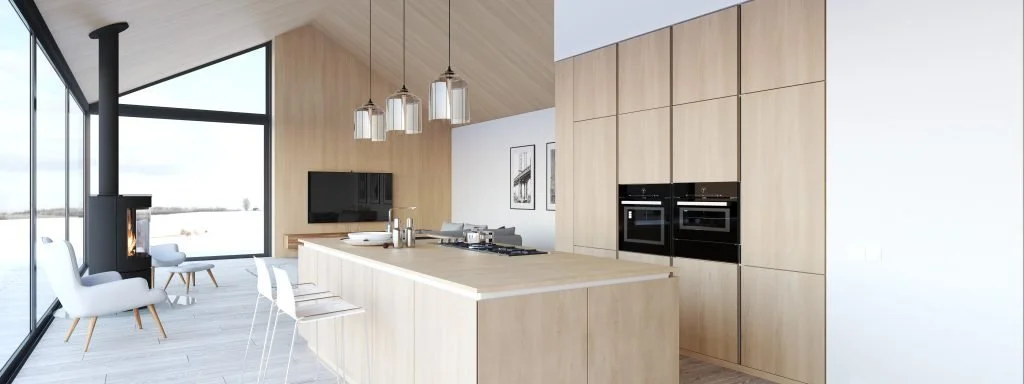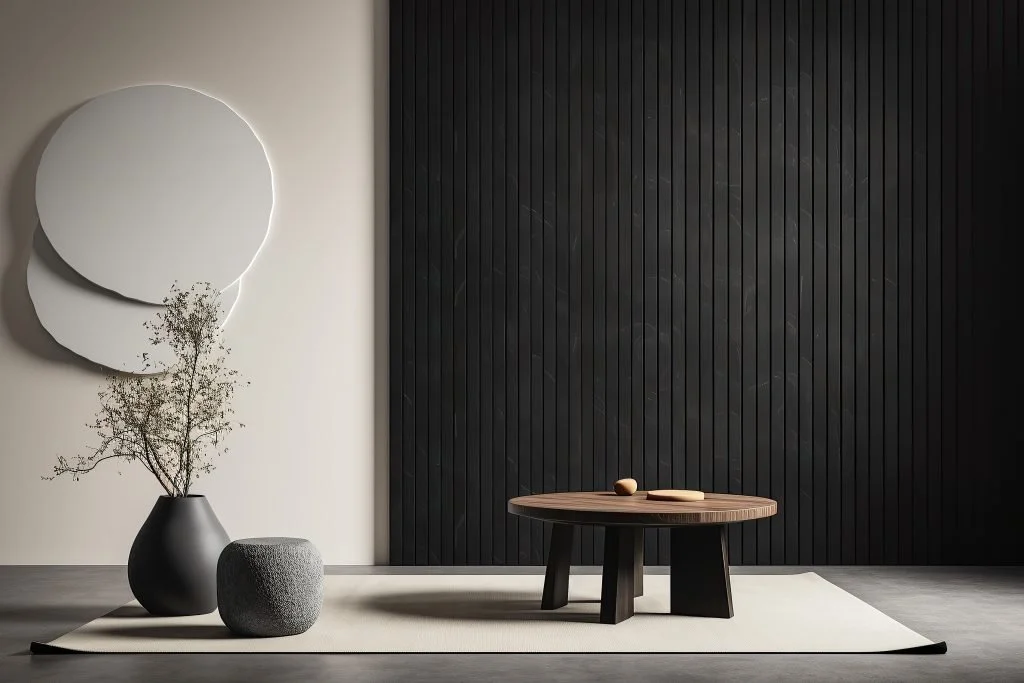Home Acoustic Design: Creating Spaces That Feel Calmer
In the hustle and bustle of modern life, we often overlook how our environment affects our mental and physical well-being. Noise, whether it’s traffic, conversations, or constant buzzing from devices, has become a constant in our daily existence. Over time, this can increase stress, hinder concentration, and negatively impact sleep. As a result, home acoustic design—the art of creating quieter, more peaceful spaces—has gained significant traction.
Acoustic design in the home is not just about minimizing noise; it’s about creating an atmosphere that enhances comfort, focus, and relaxation. In 2025, with the increasing awareness of how sound impacts our lives, many people are turning to thoughtful acoustic design to improve their living spaces. Here’s a look at how sound design can transform the home into a sanctuary of calm.
The Role of Sound in Our Well-being
To truly understand why acoustic design matters, it’s essential to grasp the role sound plays in our well-being. Constant noise pollution, whether from external sources like traffic or internal sources such as loud conversations or devices, can increase stress levels. This, in turn, affects our mental health, sleep, and even productivity. Research has shown that exposure to high levels of noise can contribute to anxiety, elevated blood pressure, and difficulty sleeping.
On the other hand, a well-designed acoustic environment has the power to positively affect mood, cognition, and relaxation. Studies suggest that when we’re in spaces with controlled acoustics, our stress levels drop, and our ability to focus increases. This is particularly important in spaces meant for rest, like the bedroom, as well as areas designed for concentration, such as home offices or study rooms.
Key Elements of Home Acoustic Design
Effective acoustic design in a home doesn’t require a complete overhaul, but rather strategic adjustments to various elements. Whether you live in an apartment surrounded by busy streets or a house with multiple rooms, these elements can help shape a quieter, more tranquil environment.
1. Absorption Materials
One of the most common strategies for improving home acoustics is using sound-absorbing materials. These materials help reduce echoes and reverberation, creating a softer, more controlled soundscape. Some of the best options include:
Acoustic panels: These are specially designed to absorb sound and can be installed on walls or ceilings. They come in various colors and shapes, making them both functional and aesthetic.
Carpeting and rugs: Soft surfaces like carpets and rugs naturally absorb sound, making them an excellent choice for rooms where noise reduction is important. They also add warmth and comfort to a space.
Cushioned furniture: Upholstered chairs, sofas, and other furnishings help absorb sound. The thicker the upholstery, the more sound it absorbs.
Incorporating these materials into your home can significantly reduce the amount of noise that bounces around, making the space feel more peaceful.
2. Soundproofing for Specific Areas
While absorption materials are effective for overall sound management, some areas in the home may require dedicated soundproofing. For example, if you live near a noisy street or have a busy household, soundproofing can be particularly beneficial in rooms that require privacy or focus.
Windows and doors: Traditional windows and doors can let in a lot of outside noise. Replacing them with soundproof windows or adding soundproof seals to doors can help block unwanted sounds from entering the home.
Insulated walls: Insulating walls with soundproof materials can prevent noise from traveling between rooms. This is especially useful for bedrooms or home offices where quiet is crucial.
Floor underlays: For homes with hard floors, adding soundproof underlays beneath tiles, hardwood, or laminate can prevent noise from traveling between floors.
Soundproofing doesn’t need to be extreme, but it can make a big difference in reducing disruptive sounds and creating a more serene environment.
3. Noise Masking and White Noise
Sometimes, instead of eliminating noise entirely, masking it can be an effective solution. Masking works by introducing a constant, neutral sound that helps reduce the perception of other disruptive noises. The most common method is using white noise or other ambient sounds to “cover-up” unwanted noises.
White noise machines or apps can be used to play sounds like rainfall, ocean waves, or even soft static. These sounds blend into the background, making sudden, disruptive noises like traffic or door slams less noticeable. In bedrooms or nurseries, these devices can promote better sleep by masking external sounds and providing a steady, relaxing sound environment.
4. Room Layout and Furniture Arrangement
Acoustic design is not just about materials—it’s also about how the space is laid out. The arrangement of furniture and the flow of sound in a room can significantly impact the acoustics. For example, large, open rooms tend to have more echo, while smaller, cozier spaces are better for sound absorption.
Furniture placement: Soft furnishings like couches and bookshelves help absorb sound. Placing furniture near walls or in corners can reduce sound reflection and make a room feel quieter.
Curtains and drapes: Heavy, thick curtains can also serve as sound absorbers. Besides controlling light, they act as a barrier to external noise, particularly in bedrooms or living rooms facing busy streets.
By carefully considering the layout and arrangement of furniture, it’s possible to create a more sound-friendly environment without major renovations.
Acoustic Design for Specific Rooms
Different rooms in the home may require different approaches to acoustic design. A one-size-fits-all approach won’t always work, so tailoring your strategy to the function of each room is key to creating a truly calming environment.
1. Bedrooms: The bedroom is a sanctuary for relaxation, so minimizing distractions here is a top priority. Soundproofing the walls, using acoustic panels, and adding thick curtains can help create a quiet, restful atmosphere. Additionally, white noise machines can help mask outside noises like sirens or passing cars, allowing for uninterrupted sleep.
2. Home Offices and Study Areas: For spaces where focus and productivity are essential, minimizing distractions is crucial. Acoustic panels on the walls or ceiling can improve sound clarity and reduce distractions from neighbors or street noise. Furthermore, soft furnishings and carpeting can help dampen any background noise from within the home, such as conversations or appliances running.
3. Living Rooms and Kitchens: These spaces, which often see higher levels of activity, require a balance between sound absorption and openness. Soft furniture and rugs can help absorb sound, while open shelving or decorative elements can serve as sound diffusers. In kitchens, soundproofing appliances can help reduce the din of dishwashers, blenders, or other equipment.
The Psychological Benefits of Acoustic Design
Beyond just the physical comfort of a quieter space, the psychological benefits of good acoustic design cannot be overstated. When our surroundings are peaceful, we feel more relaxed and at ease. A well-designed acoustic environment can:
Reduce stress and anxiety: A quieter, calmer space is naturally more soothing, helping to lower stress levels and encourage relaxation.
Boost concentration: In spaces like home offices, reducing distractions allows for improved focus, leading to better work performance and creativity.
Promote restful sleep: In the bedroom, eliminating external noise and controlling sound flow helps create an environment conducive to deep, restorative sleep.
As awareness of these benefits grows, more people are prioritizing acoustic design to create home environments that not only look good but feel good too.
Conclusion: Designing for Serenity
In our noisy world, home acoustic design is a powerful tool to improve quality of life. By thoughtfully incorporating sound-absorbing materials, strategically soundproofing certain areas, and even introducing white noise, it’s possible to create a home that feels calmer, quieter, and more peaceful.
As we continue to embrace minimalism and focus on well-being, the role of sound in our homes will only grow in importance. Whether it’s through enhanced sleep, improved focus, or simply a more peaceful atmosphere, the future of home design will undoubtedly place a greater emphasis on creating spaces that feel as good as they look.

